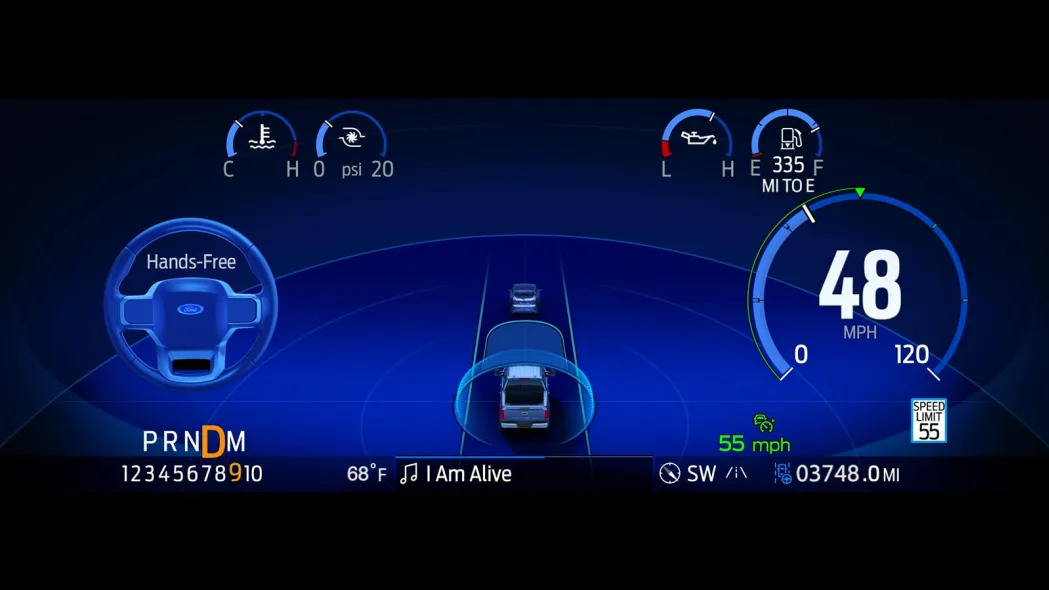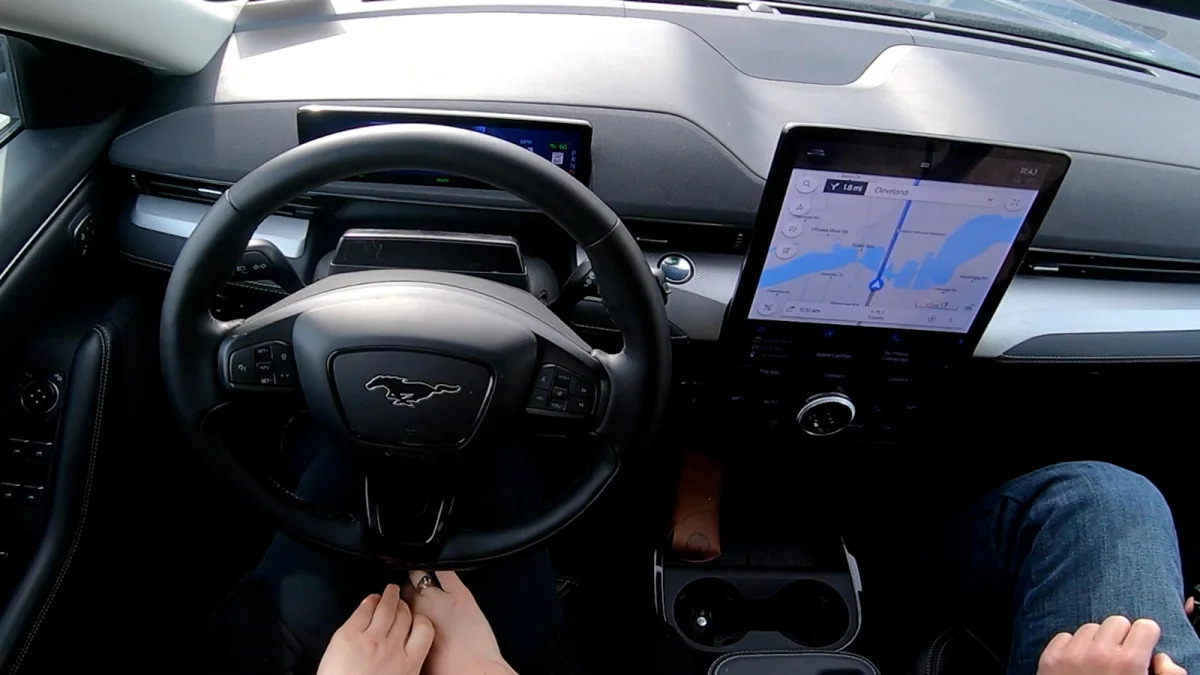Ford announced a few months ago that it would start offering a hands-free highway driving assist later this year. It's clearly a direct competitor to the only other hands-free system on the market, GM's Super Cruise. As part of the over-100,000-mile real-world test trip that the company has been conducting before the release, it invited journalists, including yours truly, to try BlueCruise out in the test vehicles along some stretches of Michigan highway. Turns out it works quite well, certainly well enough to be a solid option to the current basic version of Super Cruise.
BlueCruise works very similarly to Super Cruise both in how it manages the vehicle and driver, as well as how to activate it. The car is guided by a combination of radar, camera and GPS position information. These all help keep the car in the lines, at a safe position compared to other cars, and also ensure that the system is only being used on roads with mapping data. Currently, more than 100,000 miles of highway in the U.S. and Canada have been mapped and are compatible with BlueCruise.
Inside, there are infrared sensors and a camera that monitor the driver's head position and eyes. They allow some leeway, but if a driver is looking away too far or for too long, the car will alert the driver to pay attention to the road again. And to activate the system, the driver simply has to turn on the cruise control. As long as the lane-centering functions are turned on, the car will automatically go to hands-free if it's centered on a compatible road. If you don't want to use the function, switching off the lane-centering systems will switch it to basic adaptive control.
All of the activity and alerts are communicated to the driver through the instrument display, which reconfigures, says the car is hands-free and turns a shade of blue to indicate that BlueCruise is active. It's a bit different and slightly more discreet than the GM system, which also includes a steering wheel with a large light indicator at the top as an additional status monitor to display symbols and messages.

But the key thing is, does it work? Yessir, and it does so quite well. The car stays well-centered, and does so quickly. Even in highway bends, it doesn't wander or get too close to either side. It reacts promptly to said bends, too. As such, once you get over the inherent strangeness of taking your hands off the wheel at 70 mph, it feels comfortable and safe to use in most situations. In particularly busy, fast-paced and aggressive traffic, you may want to consider not going hands-free simply so that you can intervene more quickly and naturally in an emergency or for an unexpected exit. But we would say the same for Super Cruise. In most highway driving circumstances, we would feel at ease (but still aware and engaged) using BlueCruise just as we would with the GM system.
Worth noting is that both BlueCruise and Super Cruise will be evolving from their current versions. Ford is developing on-demand automated lane changes that would be activated with a tap of the turn signal stalk. GM already offers the on-demand system on more premium Super Cruise cars, but will soon enable the car to automatically execute changes upon coming up on a slower-moving vehicle. GM will also allow you to use Super Cruise when towing. We've tried out a version of this system and were impressed. Considering how BlueCruise works, it will probably also have solid lane-change capabilities.
If you'd like hands-free driving in your Ford, you'll have to make sure you get either an F-150 or a Mustang Mach-E. The feature will be available later this year, but you can buy one of those models with the hardware necessary to use BlueCruise right now. Once the system is available, it can be downloaded over-the-air. The software for both models is $600, but the hardware can cost a bit more, as it's included as part of the Co-Pilot360 Active 2.0. The latter is offered as its own $995 option on the F-150 Lariat, King Ranch or Platinum. It's standard on the Limited. In the Mach-E, you'll spend $2,600 to get the hardware as part of the Comfort and Technology package, or standard on the CA Route 1, Premium and First Edition Mach-Es. And for clarity, those prices are without the BlueCruise software, which is an additional $600.
Related Video:










Sign in to post
Please sign in to leave a comment.
Continue